40mm or 35mm…? The Two Sizes Of The Tissot PRX Powermatic 80 Compared
And if you hesitate, the short answer is... It depends!
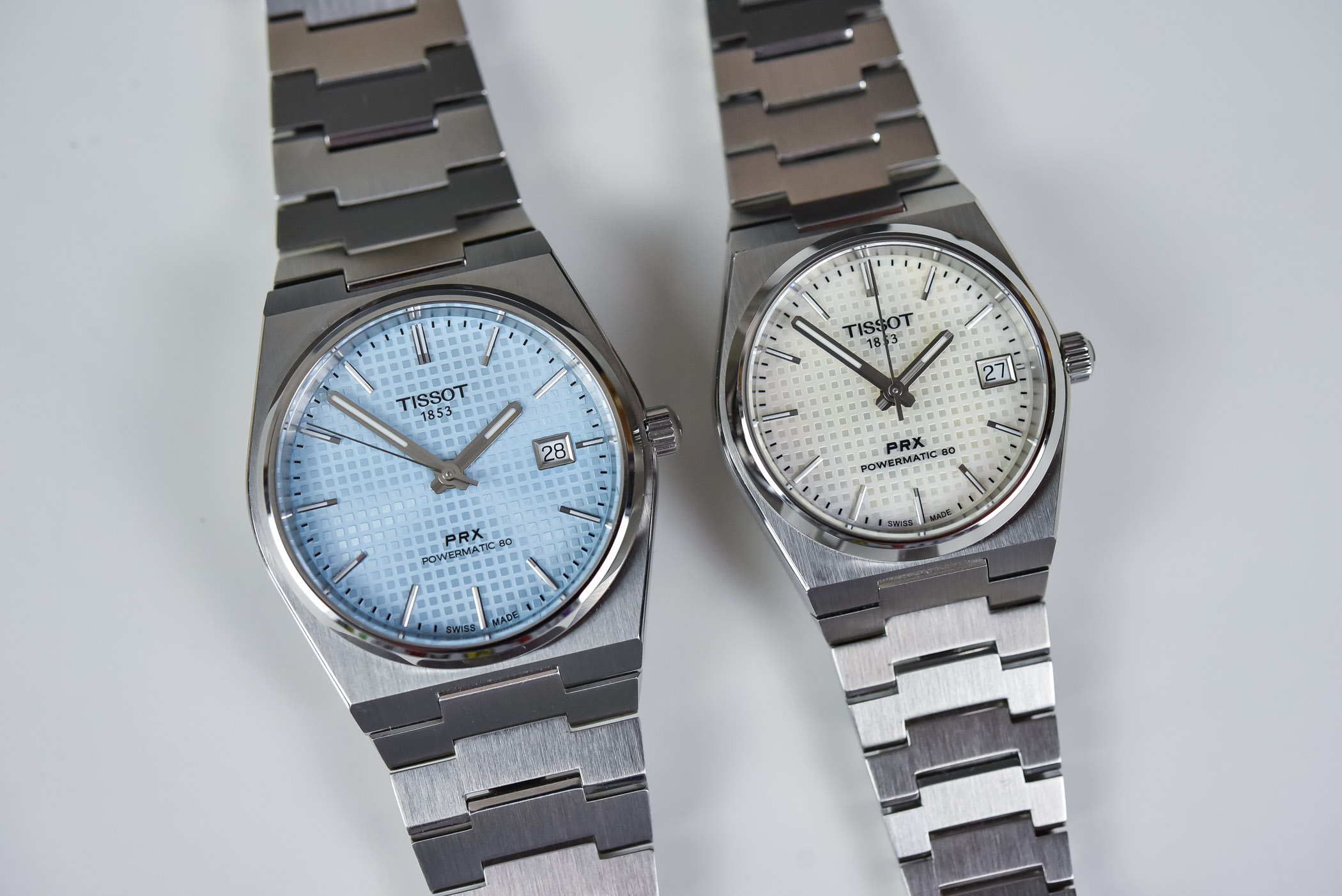
To say that the Tissot PRX is a success would be an understatement. It is a massive hit, and for obvious reasons. Besides the overall very decent quality of the watch, combined with an accessible price, it’s mostly its style that made it so popular… The flair of the 1970s, the luxury sports watch look, the integrated design, a powerful and reliable movement and the resemblance with some of the most iconic watches (but clearly unattainable) of the category. It has it all. But the only mechanical option, up until recently, was undoubtedly on the large side. Problem (partially…) solved, as we now have the new Tissot PRX Powermatic 80 35mm. Is it perfect? Which model should you choose? We compare the 35mm and 40mm Tissot PRX to help you decide. Spoiler alert: it’ll be a hard choice!
For many years, the concept of the luxury sports watch – refined, high-end watches (mostly) in stainless steel with a matching and integrated steel bracelet and thin movements, as first presented by Audemars Piguet and designed by Gerald Genta with the 1972 Royal Oak – has been the exclusivity of a wealthy and privileged crowd. Not only these watches, with names such as the Royal Oak, the 222/Overseas and the Nautilus, were priced at high levels, but availability has been problematic in recent years. Still, some watchmakers, seeing an impressive rise in popularity for the sporty-chic watch with integrated design, decided it was time for the masses to also enjoy it. It somehow started with Maurice Lacroix and the Aikon collection, soon joined by an array of brands seeing immense potential.
Among them was Tissot, which came with a watch named the PRX, which ended up being one of the most credible alternatives on the market. Nicely designed, manufactured according to the strict standards of the Swatch Group, mechanically interesting, fully equipped and even carrying some historical background, just to add some legitimacy to the concept, the Tissot PRX Powermatic 80, presented in mid-2021, will soon become a success. And the addition of a green dial, later joined by a fancy ice blue dial or long-awaited rubber straps only increased the popularity of this watch retailing way below 1,000 euros.
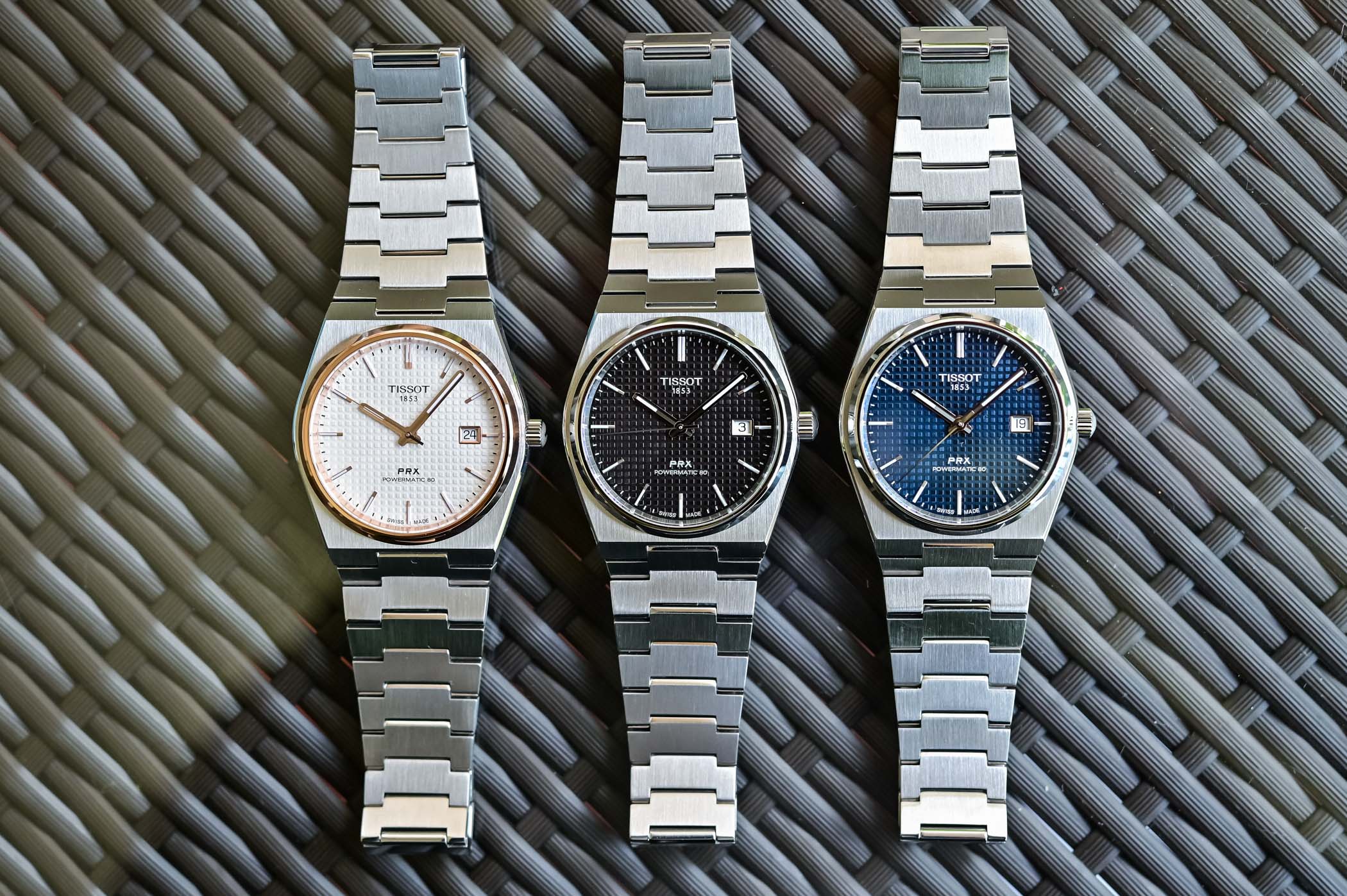
The return of the Tissot PRX was done in early 2021, with a quartz movement. What mattered most to us here, at MONOCHROME, was the introduction of the mechanical Powermatic 80 edition in June 2021. Let’s do a quick recap, just to have a solid base before moving to the new 35mm edition and how it compares to the larger version. The PRX, understand by that the 2021 model with automatic movement, was housed in a stainless steel case of 40mm, with a height of about 11mm and a design that was based on a late-1970s watch first named Seastar, later renamed PRX (where P stands for Precise, R for Robust and the X, here a Roman numeral, refers to the 10 bars water-resistance). Early models came with a waffle-like pattern embossed on the dial, and a Powermatic 80 movement, the highly competitive entry-level automatic movement of the Swatch Group. Price… Less than 700 euros back then.
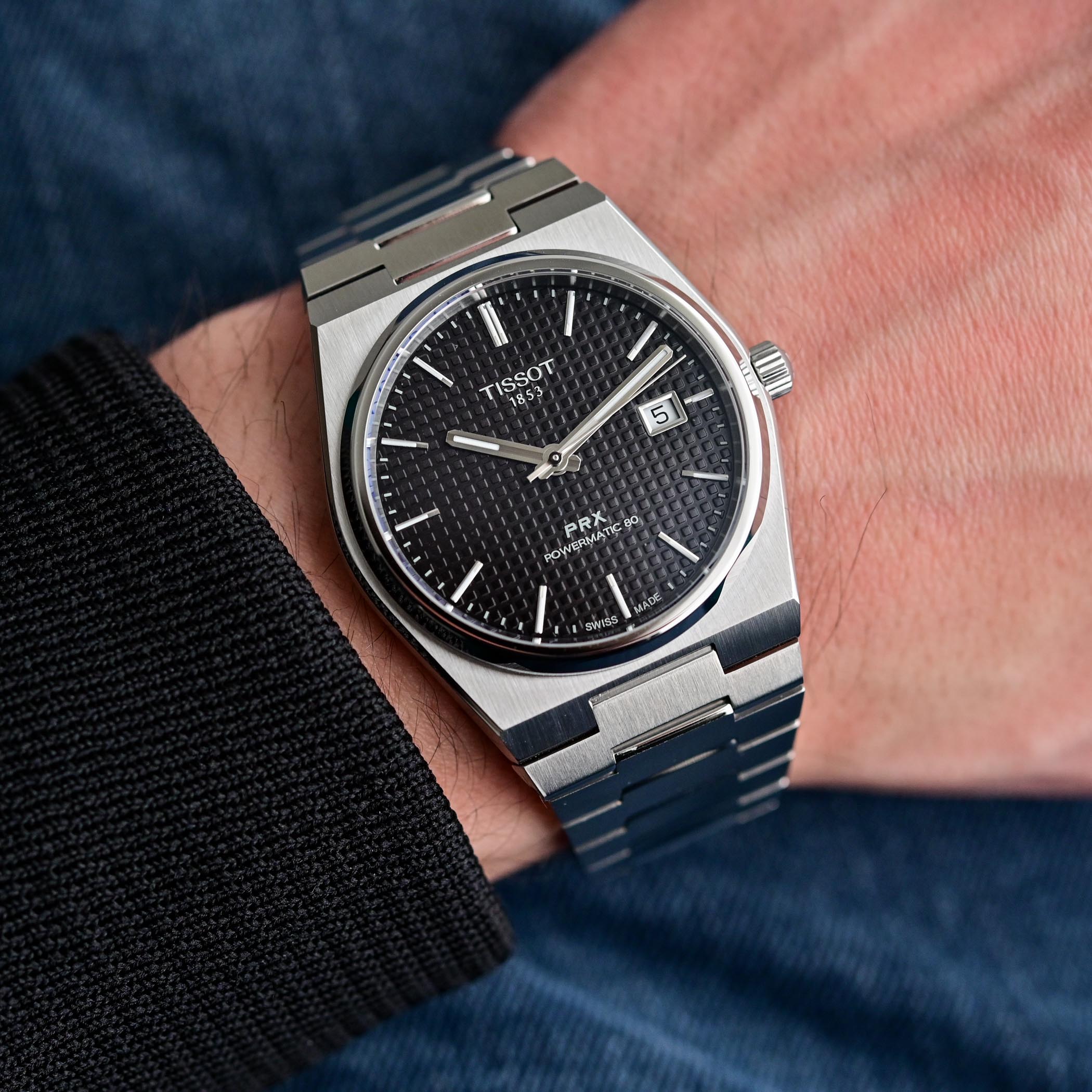
It all sounds perfect on paper. But there was a slight issue with this 40mm edition, at least for some watch enthusiasts with a smaller wrist. While the lug-to-lug dimension was announced at about 45mm, the reality was different. Indeed, the first link of the bracelet doesn’t articulate, meaning that including it resulted in a L2L measurement of more than 51mm. The more flexible rubber strap later added to the collection somehow corrected this, but if you prefer a steel bracelet, you had to deal with a rather lengthy watch. Personally, on my 16.5cm wrist, the classic 40mm PRX always felt manageable, even if a slightly smaller case and wrist presence would have not bothered me either. And I was not the only one demanding a mid-size watch. Men, but also women, asked for it. And Tissot made it.
Welcome the Tissot PRX Powermatic 80 35mm, a.k.a the mid-size edition. What has changed? Well, not much apart from the dimensions. The overall look and feel are identical, the specs are the same, the features are shared and the movement is still the calibre 80.111. So, to make it short, it’s all down to a reduction of (almost) all measurements. 35mm in diameter, still the same 11.3mm thickness, a reduced lug width – 24mm vs. 27mm – a bracelet that tapers to 16mm instead of 18mm at the clasp. Materials, fit and finish? Entirely identical. Water-resistance? Still 100 metres. Construction of the bracelet and clasp design? No changes there.
Apart from the reduction of the case diameter, with a significant decrease of 5mm, it is the lug-to-lug measurement that matters most here. Now, including the non-articulated first link of the bracelet, the length of the case has lost about 6.5mm to a fairly compact 44.9mm – Tissot mentions 35mm L2L without this link, but we have measured about 38.5mm at the tip of the lugs, on the side of the case (Tissot might have a different way to measure, though… probably between the lugs, were the bracelet is attached).
Now come the important questions… How does it look? How does it feel on the wrist? First of all, it is well known that reducing a case doesn’t necessarily bring the same visual balance. A watch can look good in 42mm and be unbalanced in 37mm. The opposite is also true. A slender, compact sports watch of 36mm might look disproportionate in a 40mm case (I see you Rolex Explorer 40…) What about the 35mm PRX Powermatic? My own, biased perception is that of a watch that looks good, yet a bit top-heavy. Since the thickness is the same, the proportions have changed, making the watch visually thicker than its larger brother. The 40mm, having more length, can easier hide its thickness (even though, strictly speaking, it isn’t thick). It’s all down to a sort of golden ratio, the surface/height parameter… The new 35mm doesn’t look bad at all, far from me to say that, it just feels a bit more chubby.
How does this new PRX Powermatic 80 35mm wear compare to its larger brother? Well, thankfully, the issue I mentioned above somehow fades away once you have the watch on the wrist. The fact that Tissot hides most of the thickness into the caseback, with thin flanks for the central case, virtually slims down the watch – the caseback somehow sinking into the wrist. What about the size? First of all, looking at the photos illustrating this article, it must be said that our editor Robin produced the images. Robin, a tall Dutchman, has a wrist of about 18.5cm. And if the 35mm looks good on him, at least according to me, he thinks it’s a bit too small and he prefers the 40mm model (which he owns). And I fully understand that.

On my own 16.5cm wrist, as well as on a 15cm feminine wrist, the 35mm PRX Powermatic 80 simply looks great. Balanced, proportioned, having this lovely effect of the bracelet wrapping around the wrist, and not that of a watch sitting on top of the wrist. The last benefit of a smaller case? As it features the same movement, the 35mm PRX has, in my opinion, a nicer position for the date window, sitting closer to the edge of the dial. However, I think the dial of the 40mm, with more space around the markers and logos, feels more balanced visually.
All in all, there’s no definitive choice and nothing is entirely perfect. There are compromises on each side. Remember that we’re looking at a segment of the market that cannot be as refined as something from Patek or Vacheron. Changing the size of a watch is one thing, creating a new, smaller and thinner movement would require much more effort and thus different costs. That being said, I think Tissot did a great job when reducing the PRX Powermatic 80. The new watch is as good as its larger brother on most levels, just more compact and still visually balanced. It has its own charm and style.

Which one should you choose? I would say this; if you’re a tall man with a wrist above 17.5cm, the 40mm PRX would be my first choice. Shorter, skinnier men with wrists below 17cm will certainly be better with the 35mm (remember, the length of the watch matters more here than the diameter). But, to make things a bit more complex, I’d end up saying “it depends” – I know, you can hate me for that one… It depends on your tastes, on how you feel comfortable with your watch, and on how you express your style. In any case, there’s no bad option, just your own choice. If you can, try both models at a retailer (or order both from Tissot’s website and keep the one you prefer). Start with fresh eyes, don’t have stereotypes about smaller watches. Just try them, see how you feel, and enjoy one of the coolest models in this now ultra-competitive market for accessible sports watches with integrated design. Either way, the PRX doesn’t disappoint.
We’re heard some complains about the 35mm being too small in the comments below our video review on Youtube. Some apparently wished for a 37mm version. I clearly encourage them to try both sizes before expressing an opinion.
Both the 35mm and 40mm editions of the PRX Powermatic 80 are now available for orders, at a price of EUR 745. The 35mm edition is available, for now, exclusively on steel bracelet, with a blue, black, dark green or white mother-of-pearl dial (the one presented here, and priced at EUR 795). The 40mm version is available in blue, black, dark green and ice blue, with options for a steel bracelet, a leather strap or a rubber strap.
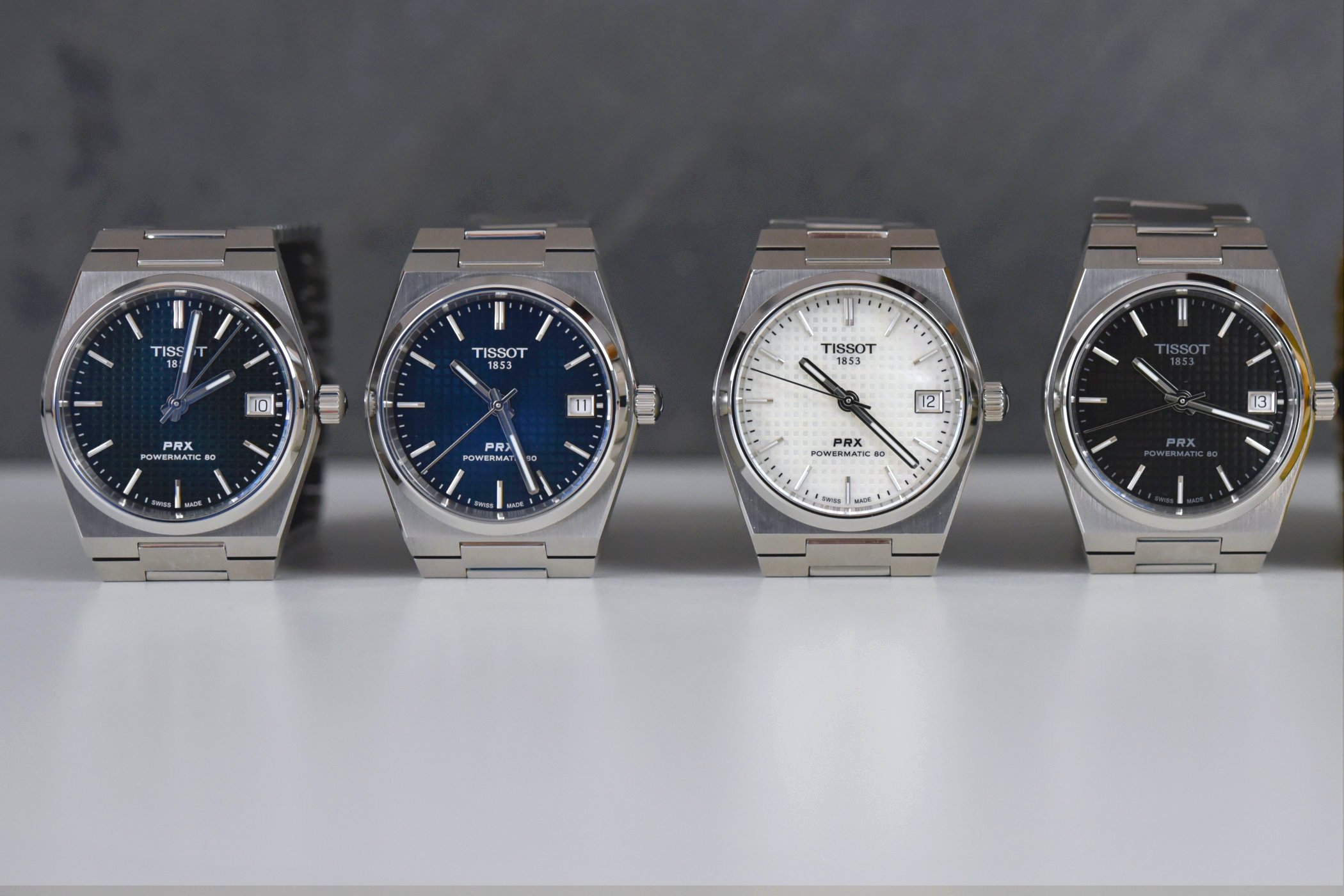
You can read more details about the Tissot PRX Powermatic 80 35mm and check our video review in this article here. For more details and orders, please visit www.tissotwatches.com.




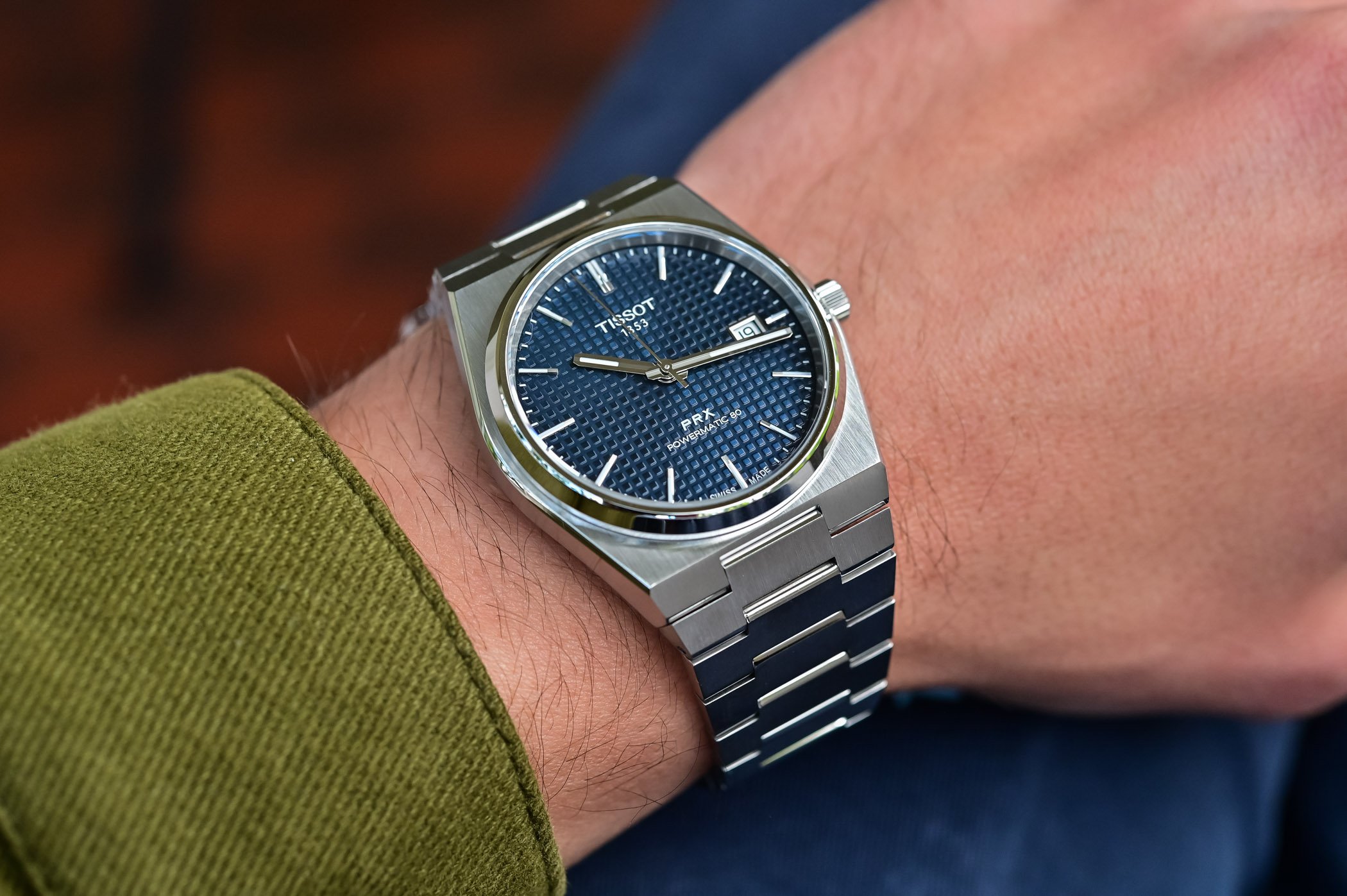
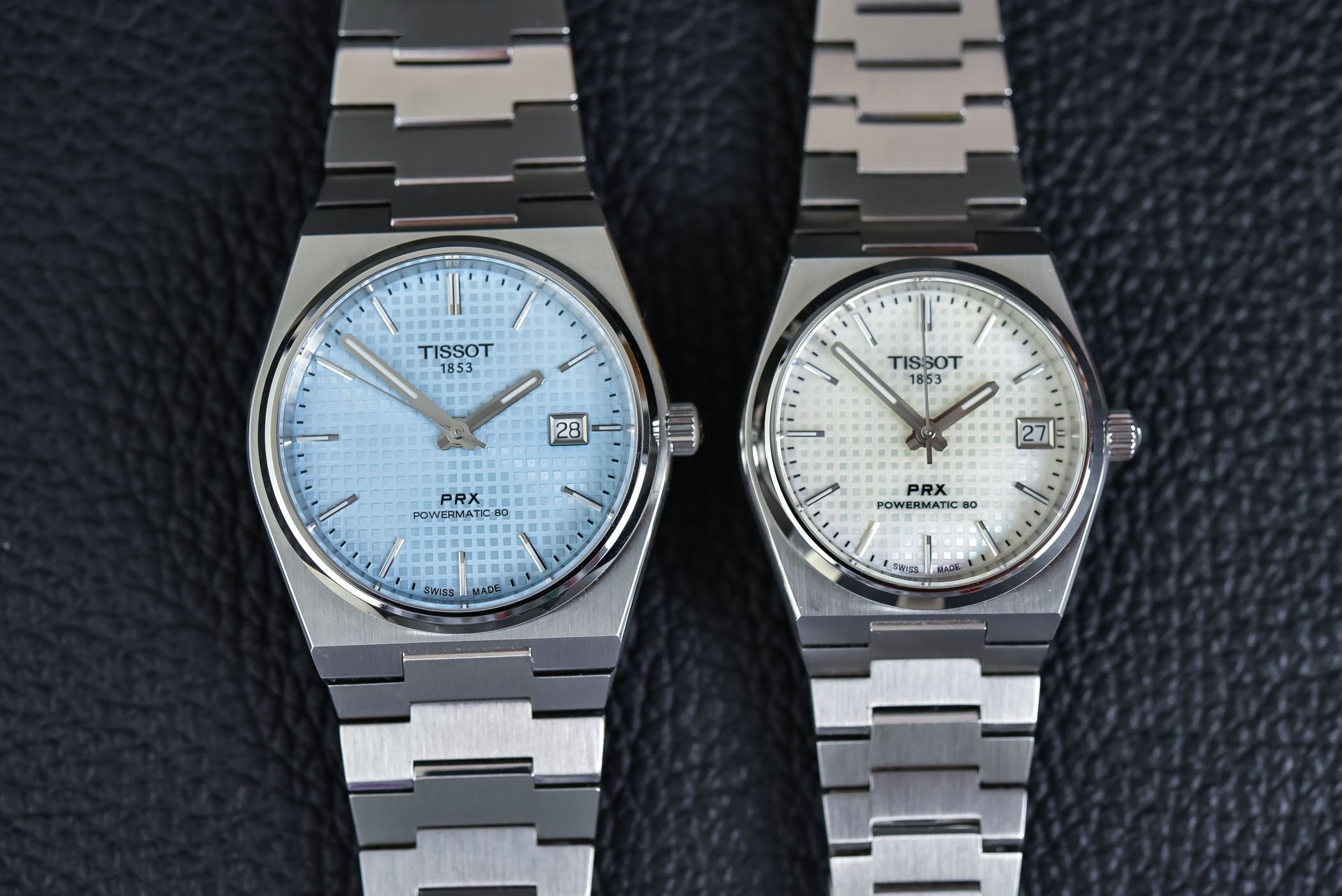

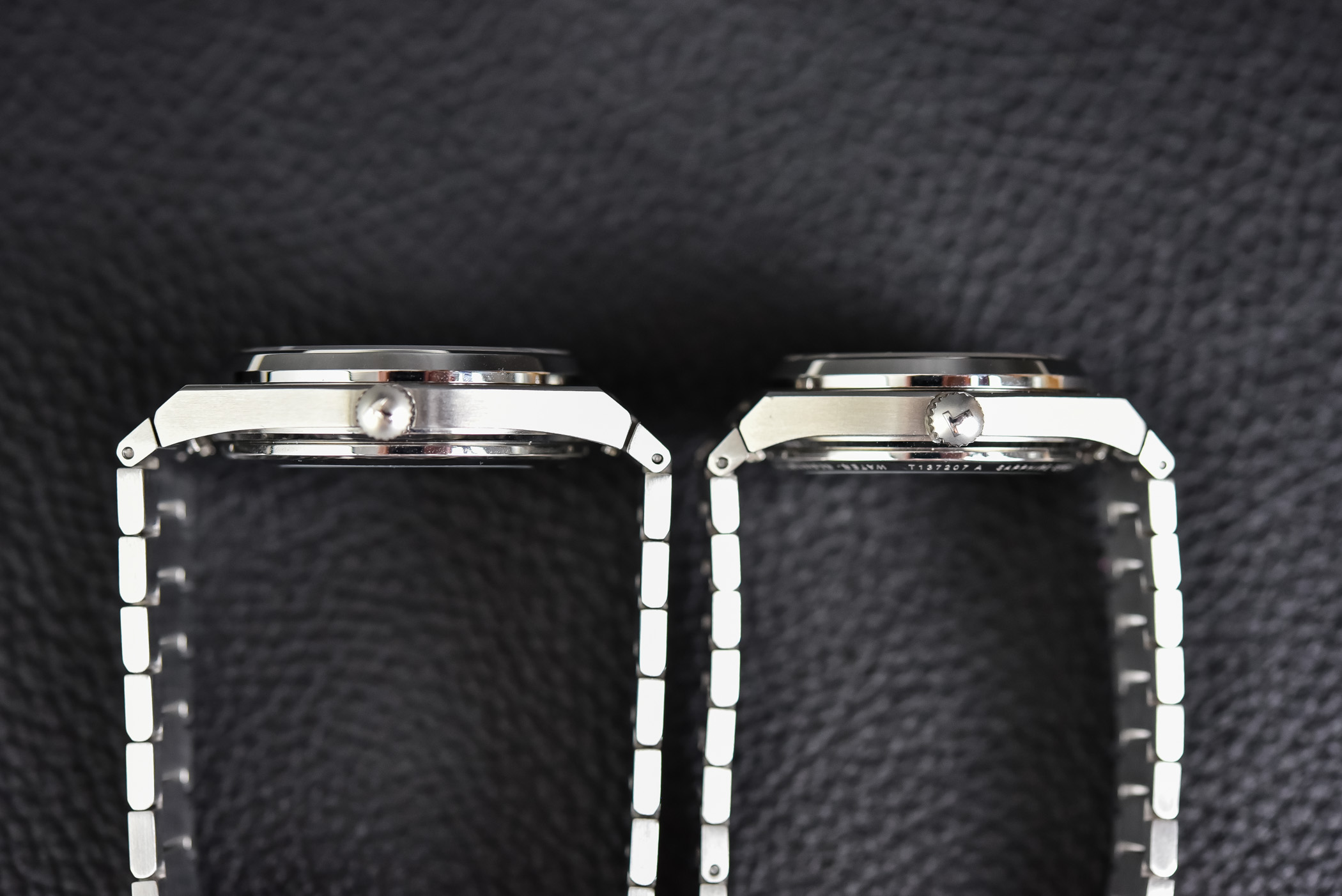
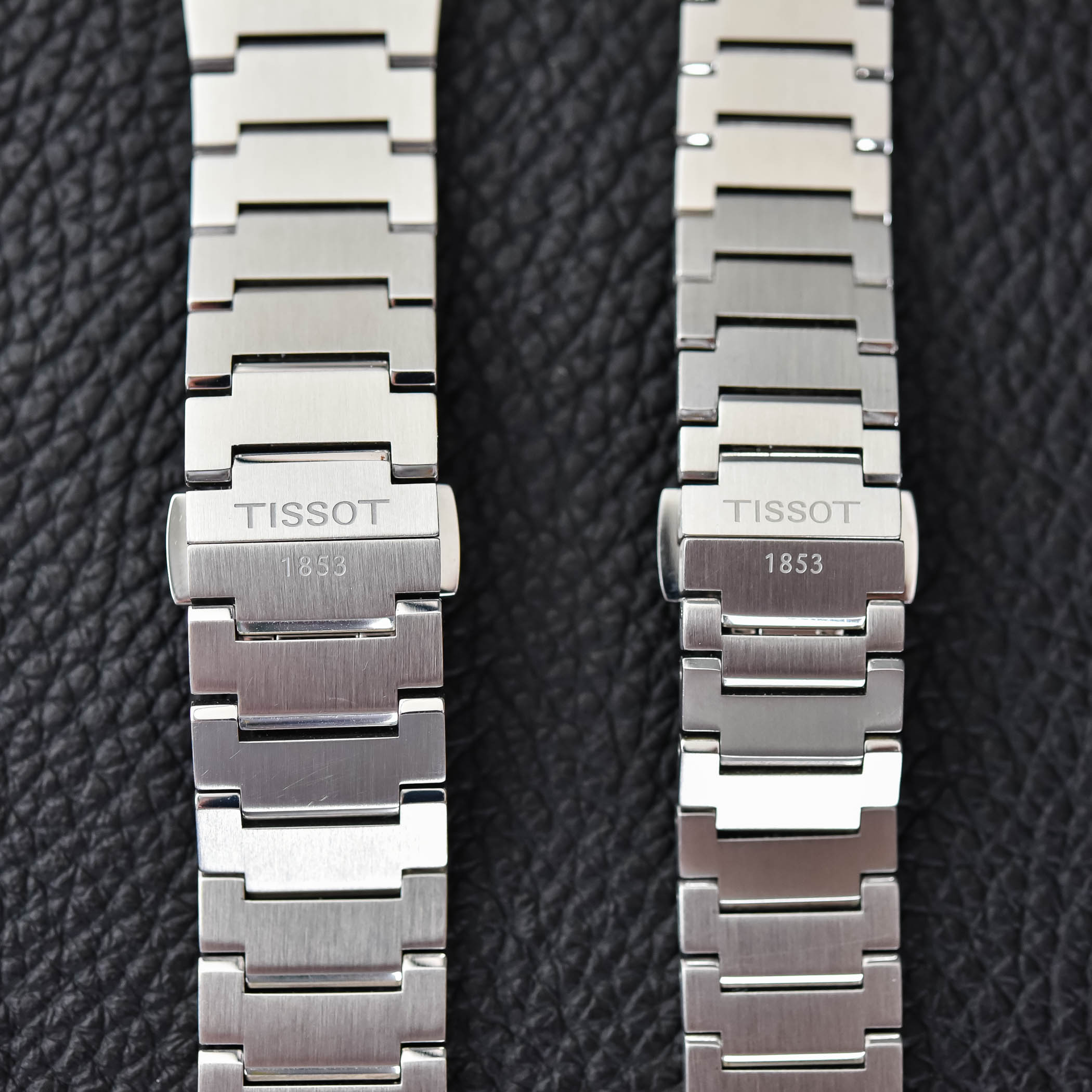

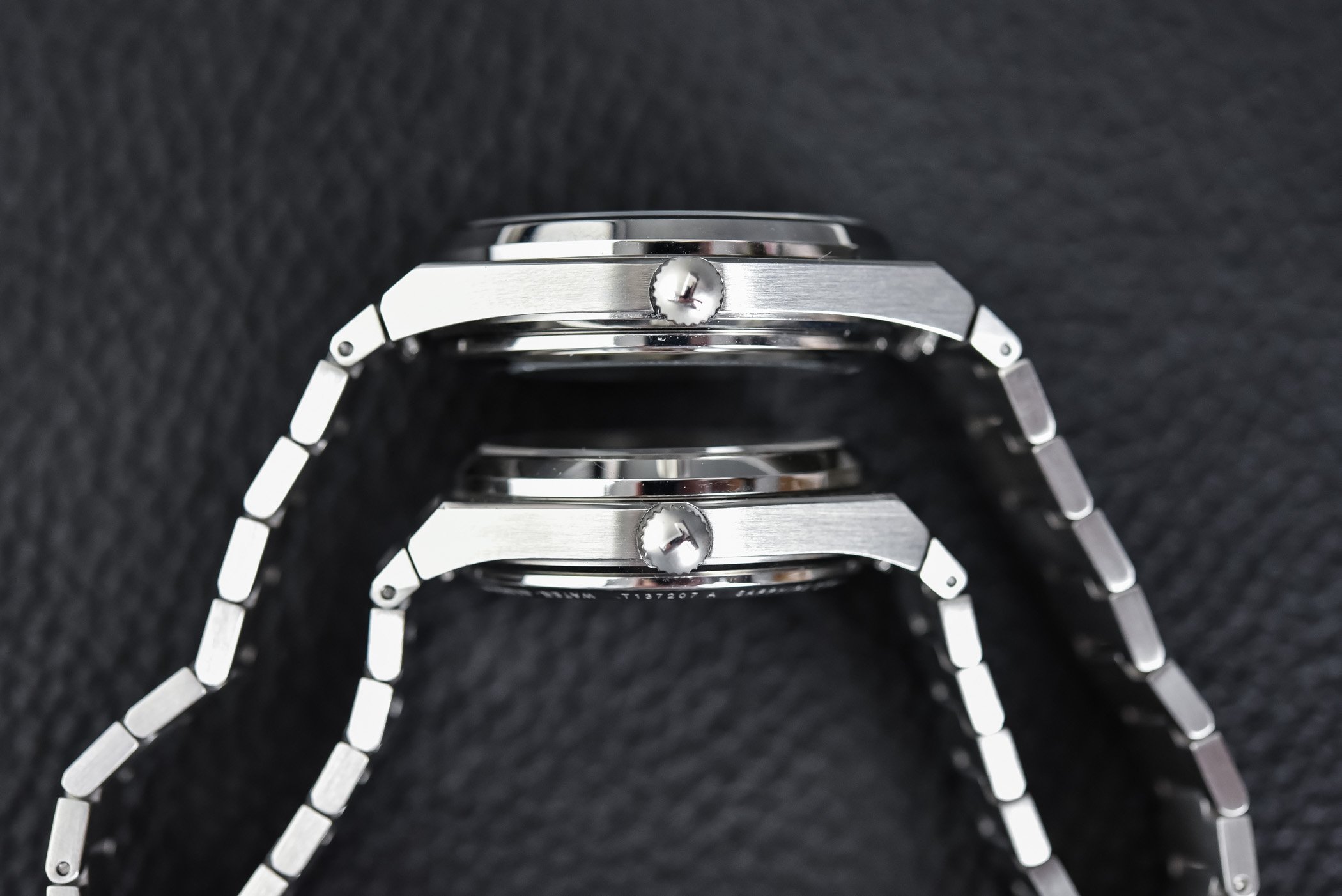

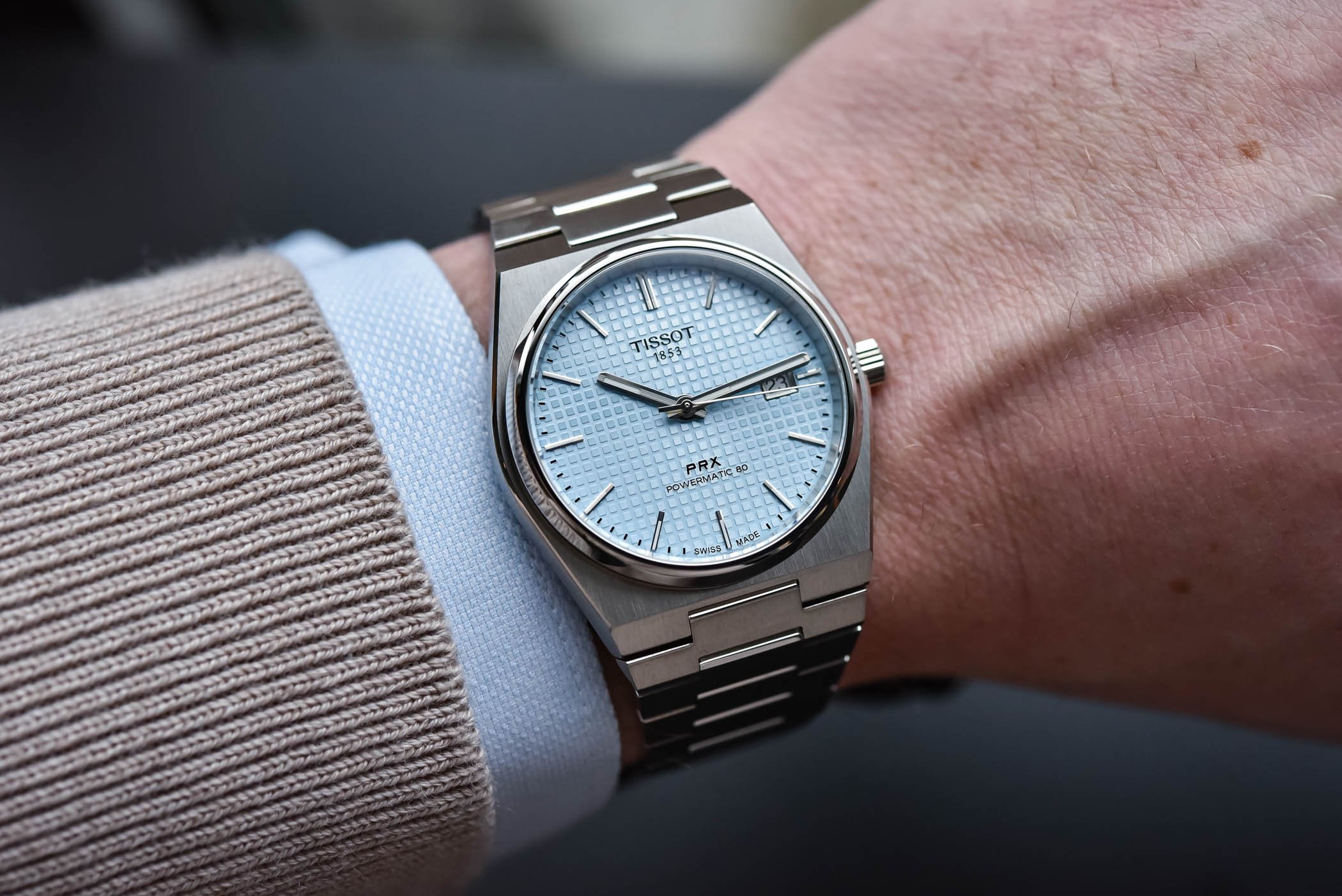




12 responses
With a 17cm wrist I’m definitely there in the camp of “try both sizes before expressing an opinion”. 🙂
Just brush-metal finish the shiny bezel and make it flat-faced instead of tapering into the glass/crystal. The light reflection from the current one takes away from the otherwise very timeless design.
I feel like the 35mm PRX is best in quartz since the case is slimmed down to 9.6mm. It’s also the most true to the watch’s origins and inspiration. Automatics were archaic in the mid to late 70s and the in-house 2030 movement Tissot put in the original PRX was pretty interesting, as many early quartz movements tended to be.
That being said, I think there’s room for both in a collection – the 40mm PRX for warm weather and short sleeves where more ‘wrist presence’ is a good thing and the smaller 35mm for a smaller and less obtrusive watch that needs to fit under tight sleeves, cuffs, and gloves.
Too big of a gap between 35-40. next up will probably be a 37 or 38mm.
I’d have to try them on. My wrist is just under 17cm, but I’m the kind of person that likes both larger and smaller watches. Looking at the pictures and the YouTube video I think I prefer the 35mm, but it’s hard to say.
Ugh, it’s frustrating to try to get a sense of the size with the watches worn the “wrong” way down against the wrist below the wrist bone.
This is the epitome of hair splitting in the watchmaking industry nebula. A nine-minute life literally wasted on reading about how you should rather wear a big watch if you’re rather big, or a not so big one if you aren’t.
picked up a 35mm myself, it’s great. i have a 6.3″ wrist and 55mm across
It’s silly that the author seems to think that people need advice on what sizes of watches they should buy.
The 40mm Powermatic80 has more versions, the article is missing the white dial with rosegold PVD and steel casing as show on the image “Three 40mm editions of the Tissot PRX Powermatic 80”. I own 3 PRX, 2 Powermatic 40mm and the goldcolored quartz, amazing watches.
Until recently I’d not seen one in the flesh, the 40mm looks huge, 38mm would be better but until there is an option without the waffle dial it’s neither for me.
The position of the date window on the dial clearly speaks for the 35 millimeters.